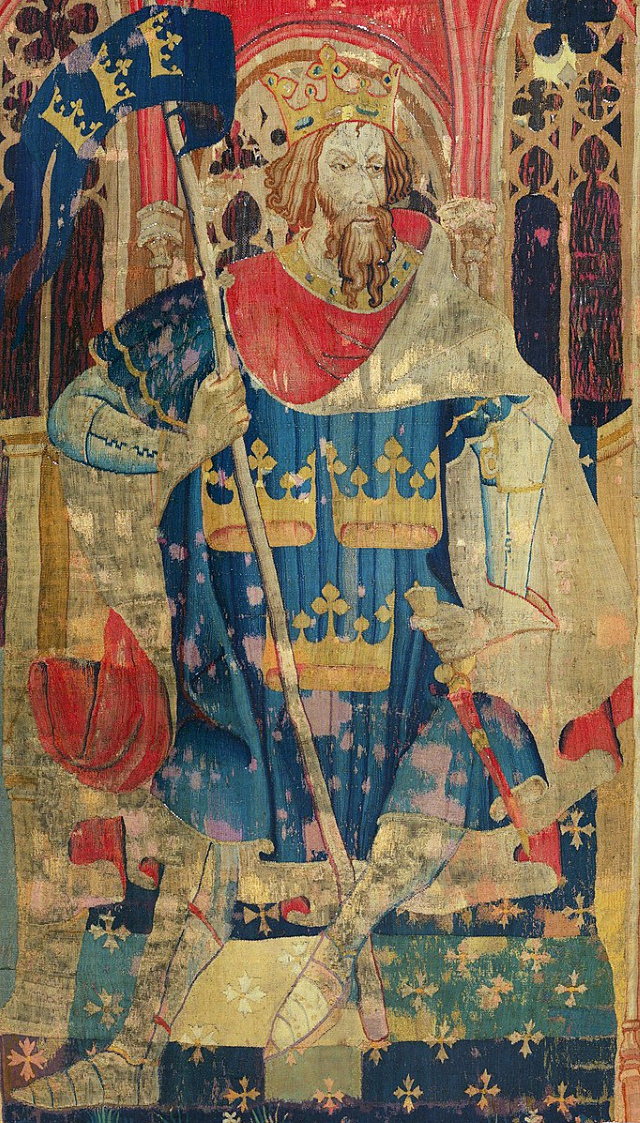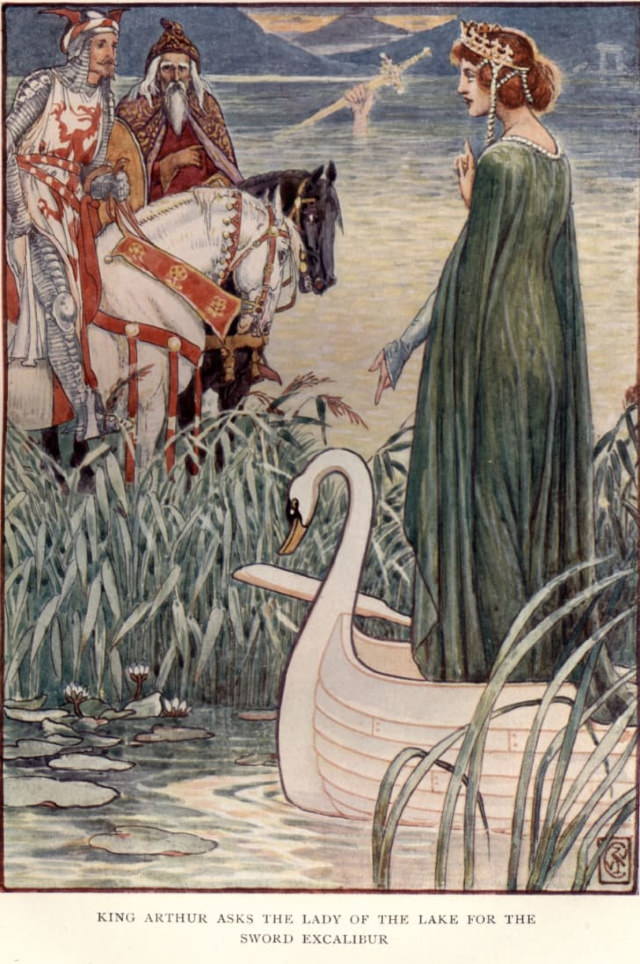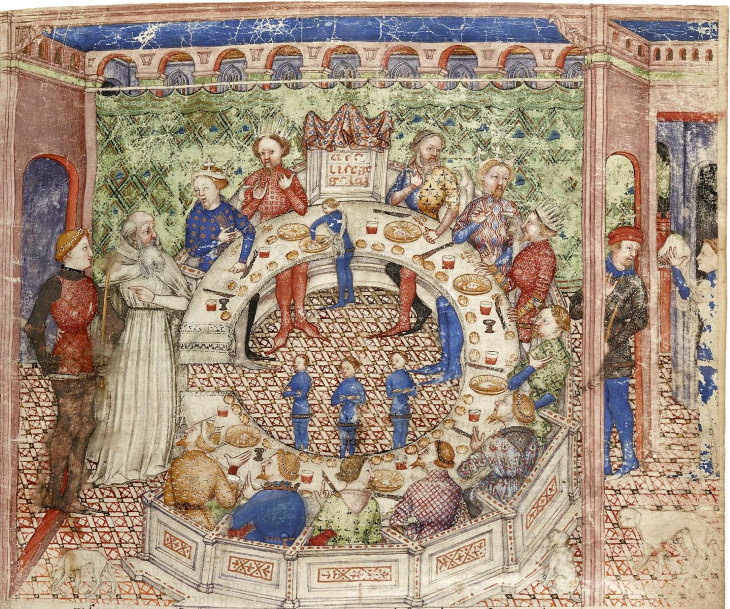1. We don’t know if King Arthur was real or not to this day
King Arthur, a tapestry dating back to circa 1385
You’d think that modern archeological science would be able to find the remains of Camelot (or any other proof of King Arthur’s existence) in a blink of an eye. Alas, some mysteries are bound to remain unsolved for many more years, and the existence of King Arthur seems to be one of them. The earliest account of Arthur’s existence - the writings of the 9th-century Welsh historian Nennius - place him at the Anglo-Saxon invasion that took place in 450 AD.
However, the only surviving historical manuscript of the Anglo-Saxon invasion, which was written by the Celtic monk Gildas at around 500 AD, doesn’t mention Arthur anywhere. Moreover, there are vast inconsistencies regarding Arthur’s title too, with Nennius’ book actually casting him as a knight, and not a king. King Arthur’s stories are so rich in both fact and fiction that we’ll probably never know if the legendary king had actually existed.
2. Excalibur initially had a different name
In one of the first books detailing King Arthur’s adventures, the 12th-century “History of the Kings of Britain,” Arthur’s magic sword had a different name. Geoffrey of Monmouth, the author of this book, initially called the sword Caliburn, but it was renamed as Excalibur in subsequent versions of the legend.
3. We actually know the year when King Arthur had supposedly ruled
The quest for the Holy Grail is one of the most famous adventures undertaken by the legendary king and his loyal Knights of the Round Table. Even those not familiar with King Arthur’s other adventures know this one, possibly thanks to the 1975 comedy adaptation of the story - Monty Python and the Holy Grail.
British comedy aside, though, one written version of the legend tells of an inscription stating, “the quest for the Holy Grail must begin 453 years after the resurrection of Jesus.” According to this inscription, King Arthur must have already built Camelot and gathered the Knight of the Round Table by the year 453 AD.
4. Camelot, where are you?
The Historical City of Winchester
Historians determined to find King Arthur’s legendary Camelot have been searching for it for centuries, but to no avail. Some have suggested that the city of Winchester in Hampshire, the first and former capital city of England, was once the location of Arthur’s kingdom. Other possible options are Tintagel Castle in Cornwall and the Cadbury Castle in Somerset. Unfortunately, no proof of Arthur’s presence had been found in any of these places.
5. The Round Table had to be freakishly big (and most likely magic)
A 14th-century illustration of King Arthur's knights gathered at the Round Table
Like most aspects of Arthurian legends, the size of the famous Round Table, the centerpiece of Arthur’s kingdom, was vastly exaggerated. A 13th-century account by the poet Layamon, a famous Cornish carpenter built a table somehow capable of seating 1,600 knights and still be easily portable. More modest accounts tell that it was Merlin, the court magician, who created the round table to seat a more modest number of 150 knights.
6. The Legend of King Arthur helped the Tudors seize the English throne
A portrait of King Henry VII
The Legend of King Arthur may not have much basis in reality, but that didn’t stop a very real person, the Tudor king Henry VII, from using the folk tale to claim his reign of the English throne in 1485. Henry traced his lineage from King Arthur himself, thereby claiming that he is the rightful ruler of England.
And Henry VII was not alone, as centuries later, Queen Victoria used the powerful symbolism of the Arthurian legend to her political advantage, managing to reunite the country during the tumultuous times of the Industrial Revolution.
Share these historical facts with family and friends!






